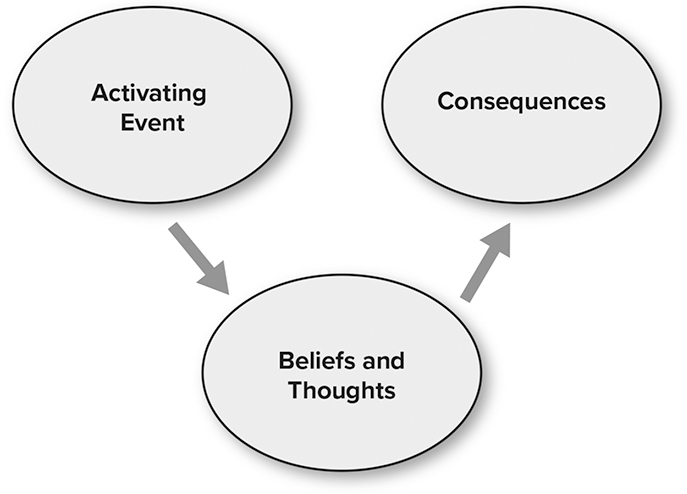
19
CHALLENGE NEGATIVE THINKING
Stop Noise Pollution
My mind is like a bad neighborhood; I try not to go there alone.
—ANNE LAMOTT
“I’m not good enough, not fast enough, not smart enough.” That’s what I hear from some of the CEOs I coach! On the outside they appear so contained, so in control. On the inside there are days they’re a simmering mess. Same goes for the seemingly confident hipster entrepreneur who just opened his third Brooklyn coffee shop. He tells me, “I can’t keep up. Everyone’s copying my ideas. I’m always one step away from foreclosure.” The way people talk to themselves isn’t pretty. Often the most destructive dialogues at work are the ones going on in our own heads.
The world outside may seem treacherous, but it’s your inner terrain that will trip you up. Sometimes we slip into states of despair so automatically, we don’t even realize we are doing it. In order to quiet your inner demon, you have to catch negative thinking. Recognize that you are torturing yourself and fight back. “Be nice to yourself” is fluffy. Let’s take a different approach. Be tough with yourself. Don’t allow a corrosive inner monologue to dictate your mood. Challenge your thinking. Here’s a crash course in cognitive behavior therapy. It’s as easy as ABC.
The ABCs of Changing the Way You Think

An event happens (A). Let’s say you got an email indicating that you have been moved off the Delectable Cake account after working on it for six months. You’ve been asked to meet with the Mindful Diet team at 3 p.m. tomorrow. Sure, you could just ask your boss what’s up, but you need to tame your thoughts before you can have a cogent conversation. You have a choice—yes, a choice—in how you evaluate the event, what you choose to believe (B). You can choose to believe that you were pulled because (1) you are never appreciated for your work, (2) your boss likes her better, or (3) this is the first step to being fired, or some combination of the three. The consequence (C) of these beliefs is that you have an awful night, you walk into work the next day grumpy, and you snap at your pal in the next cubicle. You shoot off a terse email to the head of the Delectable Cake account. You opt to check job postings rather than go to the lunchtime guest lecture with your team. If there was any question about how you handle pressure or change, you just communicated that you get rigid and irritable. By the time you have the 3 p.m. meeting, you can barely concentrate.
Now let’s try something different. What if we changed B, your appraisal of the situation? I am being transferred from this account because (1) I have trained my replacement and am ready for a more complex assignment; (2) the head of the Mindful Diet team was impressed with my work and requested that I join his group as they could use a boost; or (3) I’ve developed an expertise in the retail food sector, and I am about to get more responsibilities. The consequence of this more positive appraisal is that you enter work ready for new opportunities, you don’t fire off any damning notes, you attend the group lunch and learn something new, and you solidify your reputation as a flexible colleague.
We still don’t know why you were moved off the Delectable Cake account, but what we do know is that in the first scenario your negative assessment put you in a bad mood and didn’t help your reputation or anyone who encountered you.
The ABC model isn’t easy. It takes work, but remember, positive thinking can be learned. Blaming yourself or assuming you won’t succeed is a recipe for passivity and depression. Countering destructive thoughts makes us better friends to ourselves and more desirable colleagues to others. Joyful experiences are ignited at work when our inner environment is freed from negative assumptions.
THIS IS FOR YOU IF
• The walls of worry never come down.
• You spend so much time reading between the lines that you forget to read the lines.
• You dread your own company.
• Thinking the worst is your default.
• There’s always something “wrong.”
TAKE ACTION
![]() Thoughts are just that, ideas in your head—not necessarily facts. Treat them as theories that can be tested, rather than convincing yourself that things are horribly unfair, wrong, or about to implode. Check your hypothesis with friends and colleagues. Reality is an extremely powerful antidote to frustration.
Thoughts are just that, ideas in your head—not necessarily facts. Treat them as theories that can be tested, rather than convincing yourself that things are horribly unfair, wrong, or about to implode. Check your hypothesis with friends and colleagues. Reality is an extremely powerful antidote to frustration.
![]() If you can’t quiet disparaging thoughts, jot them down rather than perseverating on them. Carry a small notebook. Make a date with yourself to review the list and practice your ABCs.
If you can’t quiet disparaging thoughts, jot them down rather than perseverating on them. Carry a small notebook. Make a date with yourself to review the list and practice your ABCs.
![]() Don’t indulge your inner drama. Write down at least three alternative ways of viewing a situation. Go to work tomorrow and act as if at least one of those alternatives is correct.
Don’t indulge your inner drama. Write down at least three alternative ways of viewing a situation. Go to work tomorrow and act as if at least one of those alternatives is correct.
![]() Avoid becoming an injustice collector. Have your eyes peeled for a conspiracy of good things happening to you.
Avoid becoming an injustice collector. Have your eyes peeled for a conspiracy of good things happening to you.
![]() Listen for the positive internal whisper and try turning up the volume. Sometimes it is fun to have voices in your head.
Listen for the positive internal whisper and try turning up the volume. Sometimes it is fun to have voices in your head.
![]() Try some visualization. Open your mental window and let negative thoughts fly out, rather than inviting them to stick around for tea. If you are busy saying, “I’m an idiot, I’m an imposter,” try packing “Ima” in an imaginary suitcase and toss her in a dumpster.
Try some visualization. Open your mental window and let negative thoughts fly out, rather than inviting them to stick around for tea. If you are busy saying, “I’m an idiot, I’m an imposter,” try packing “Ima” in an imaginary suitcase and toss her in a dumpster.
KEEP IN MIND
• Sometimes, changing the way you think is not enough. The situation has to be altered.
• You may need to seek professional guidance if you can’t alter extreme negative thought patterns.
